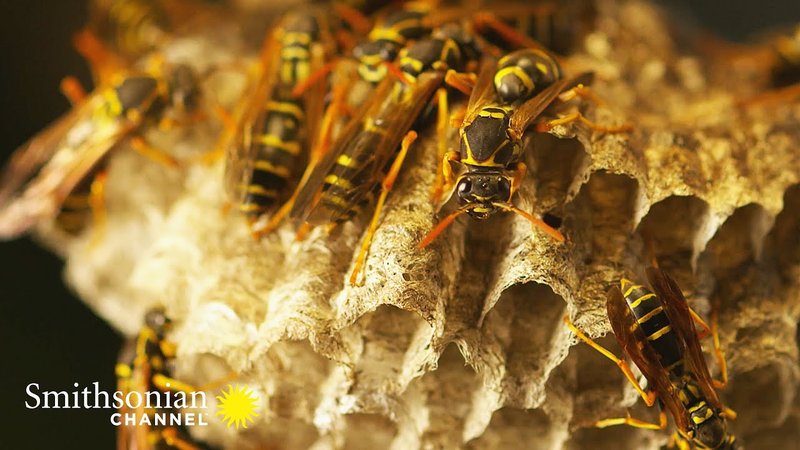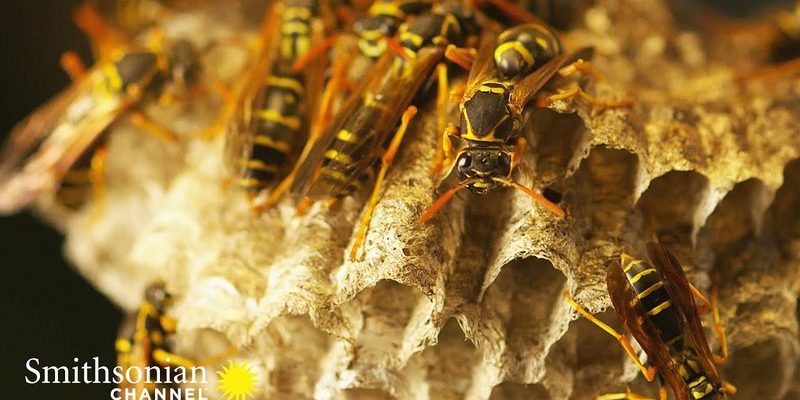
So, let’s dive deeper into the history of paper wasps, or the *Polistes* genus as scientists call them. From their humble beginnings to their intricate social structures, there’s a lot to uncover. Think of it as a journey through time, exploring how these wasps have adapted and thrived in different environments, surviving the tests of time and climate.
What Are Paper Wasps?
Before we explore their history, it’s important to understand what paper wasps are. They belong to a family called Vespidae and are known for their thin, elongated bodies and distinctive long legs. Unlike their more aggressive cousins, the yellowjackets, paper wasps are generally more laid-back. They tend to sting only when they feel threatened, often defending their nests but rarely seeking out trouble.
These wasps are called “paper” wasps because of their unique method of nest construction. They gather plant fibers, mix them with saliva, and create a papery material that forms their nests. These nests can be found hanging from trees, under eaves, or in other sheltered locations. The nests are quite beautiful, with a layered, open architecture that sets them apart.
You might be wondering why they’re important. Paper wasps play a crucial role in our environment. They are pollinators, helping plants reproduce, and they also prey on harmful pests, keeping insect populations in check. So, the next time you see one, remember—they’re not just buzzers; they’re beneficial members of the ecosystem!
The Origins of Paper Wasps
Paper wasps have a long evolutionary history that dates back to the Cretaceous period, over 100 million years ago. Their ancestors were solitary wasps, which produced simple nests. Over time, some species began to live socially, leading to the complex societies we see today. Imagine a slow transformation from being a lone wolf to joining a bustling city!
One critical factor in their evolution is climate change. As the Earth underwent dramatic shifts, wasps that could adapt to new environments thrived. This adaptability helped paper wasps occupy diverse habitats, from tropical forests to temperate regions. They learned to exploit resources in their surroundings, leading to the rich variety of species we have today.
The ancestors of modern paper wasps likely used simple nesting strategies. As they evolved, they developed sophisticated social structures, allowing them to cooperate in building and defending their nests. This transition to social living was a key turning point in their evolution, marking the beginning of their journey toward the wasps we know and recognize today.
Social Structure and Behavior
Let’s talk about the fascinating social lives of paper wasps. These insects live in colonies that usually consist of a queen and her workers. The queen is responsible for laying eggs, while the workers take on the tasks of foraging, building, and defending the nest. It’s like a well-oiled machine where everyone has a role to play.
You might picture a queen who is the bossy type, but that’s not always the case here. The queen is more of a leader than a tyrant. She lays eggs and, in return, gets care from her workers. In many species, the workers are often the daughters of the queen, creating a family unit that works together harmoniously. Isn’t that heartwarming?
Interestingly, not all wasp colonies are created equal. Some species have larger colonies with several queens, while others are more solitary. This flexibility in social structure allows them to adapt to their environment and available resources. If food is abundant, they might form larger colonies, while scarcity may lead to smaller, more solitary nests.
Paper Wasps and Their Nests
The nests of paper wasps are amazing constructions. As mentioned earlier, they create them from plant fibers, which they chew to soften and mix with their saliva. This process results in a substance that resembles paper. Their nests are typically open and exposed, unlike those of hornets, which are enclosed.
Nest building is an impressive feat. Workers start by creating a few hexagonal cells, which serve as brood chambers for the eggs. Once the queen lays her eggs, the workers care for them, providing food and protection. Early in the season, nests can be quite small, but they can grow significantly as the colony expands.
You might be curious about the location of these nests. Paper wasps prefer to build in sheltered areas, often under the eaves of houses, in tree branches, or even in garden sheds. They choose places that offer protection from weather and predators. This strategic planning ensures the survival of their young.
Challenges and Adaptations
Over the years, paper wasps have faced numerous challenges, including climate changes, habitat loss, and increasing predation. Yet, they’ve adapted remarkably well. For instance, some species have developed better foraging strategies to cope with changing food availability.
One common challenge is the threat from other insects, particularly larger wasps and birds. Many paper wasp species have developed aggressive defensive behaviors. When threatened, they can perform impressive aerial displays to scare off predators. Imagine a tiny superhero defending its home—that’s exactly what they do!
In addition to physical adaptations, paper wasps have also adjusted their reproductive strategies to maximize their survival. In times of resource scarcity, they may produce fewer eggs or delay reproduction. This flexibility in their life cycle helps ensure that they can persist even when conditions aren’t ideal.
As we reflect on the evolution and history of paper wasps, it’s clear they are more than just their buzzing presence. They are fascinating insects with a rich history, intricate social structures, and vital roles in our ecosystems. Their ability to adapt to changes makes them resilient creatures.
Understanding these wasps helps us realize the importance of preserving their habitats and supporting biodiversity. After all, they contribute to pollination and pest control, which ultimately benefits us all. So the next time you see a paper wasp, remember its remarkable journey and the role it plays in keeping our environment balanced.
In a world where we often overlook such creatures, let’s take a moment to appreciate the incredible evolution of paper wasps and what they bring to our lives. Who knew a simple wasp could tell such a grand story?

